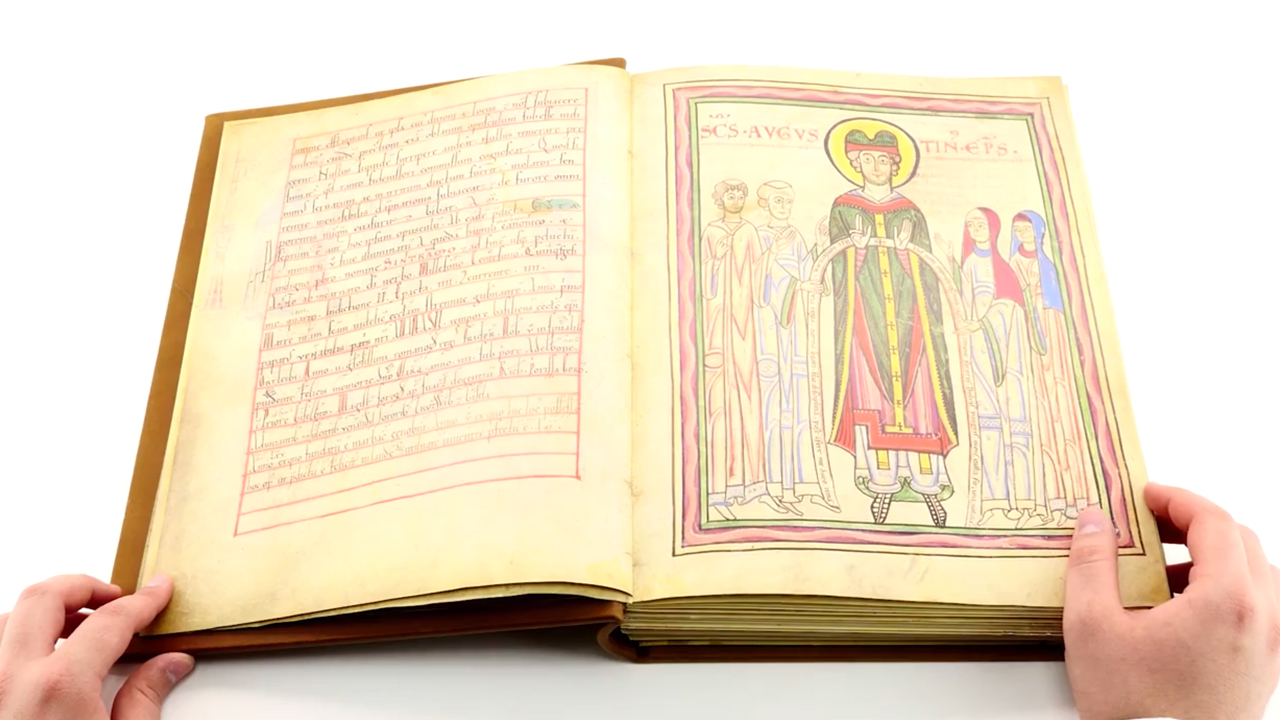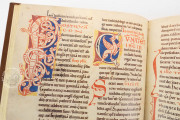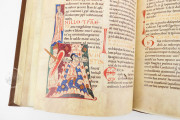Created for the Augustinian convent of Schwartzenthann in Alsace in 1154, the Guta-Sintram Codex is an important witness to close collaboration between men and women in Romanesque monastic scriptoria. As indicated by a colophon, the book is a product of the scribe Guta, a canoness from Schwartzenthann, and the illuminator Sintram, a canon from the Marbach abbey. The collaborative nature of the Guta-Sintra Codex is indicative of the shared history and mutual support of the two monastic houses: the Marbach abbey had been founded as a double monastery in 1089, and its daughter-house Schwartzenthann was populated by nuns from Marbach in 1124.
Elegantly illuminated with three full-page dedication miniatures, nine calendar headings, and twenty-six lively historiated initials, this rare example of twelfth-century Alsatian illumination is vital evidence of daily life and scribal activity of religious women.
A compendium of all the texts necessary for life at Schwartzenthann, the Guta-Sintram Codex includes a calendar with a necrology and martyrology, a homilary, and a collection of Augustinian rules with commentary by Hugh of St. Victor and the customs of Marbach. The necrology includes members of Marbach but was used, and expanded, by the nuns of Schwartzenthann until the beginning of the fourteenth century.
Care of Body and Spirit
The Guta-Sintram Codex begins with three full-page dedication miniatures illustrating, respectively, the confirmation of privileges of the Marbach abbey; Guta and Sintram paying homage to the Virgin Mary; and a hieratically scaled portrait of St. Augustine flanked by canons and canonesses.
Painted by Sintram in an elegant Romanesque style, these illuminations visually affirm the status of the codex within the history of Marbach-Schwartzetann. Also significant is the calendar-necrology, every month of which is decorated with an illustrated heading that spans across an opening.
In addition to a richly decorated and gilded initial, each heading includes the sign of the zodiac, the labor of the month, and a banderole with pharmaceutical recipes and medical advice. Meant to be used as a daily reference point, the calendar provides care for the spiritual and physical health of the canonesses of Schwartzetann.
Collaboration in an Augustinian Scriptorium
The codex is written in a beautiful protogothic script in two columns of thirty-one lines. In her colophon Guta credits Sintram for contributing to the manuscript, and indeed two hands can be discerned.
The change of hands occurs in the middle of a page, which indicates that the close collaboration between Guta and Sintram took place in the same scriptorium. The text is decorated with twenty-six large historiated initials, smaller colored initials, and red titles.
A Fortunate Survival
The Guta-Sintram Codex was used at Schwartzenthann into the fourteenth century, as attested by additions to the necrology, but later history is undocumented. After centuries of pillages the community of Schwartzenthann moved to the convent of Schönensteinbach in 1530, but the codex eventually ended up at the Marbach abbey where it was rebound in 1682.
Marbach was secularized in 1786 and demolished in 1790; what happened to the Guta-Sintram Codex, and how and when it joined the Bibliothèque du Grand Séminaire in Strasbourg, remains unknown.
The manuscript's leather binding dates from the 17th-century.
We have 1 facsimile edition of the manuscript "Guta-Sintram Codex": Codex Guta-Sintram facsimile edition, published by Faksimile Verlag, 1982
Request Info / Price






















